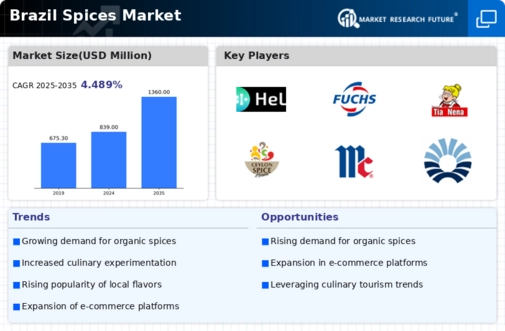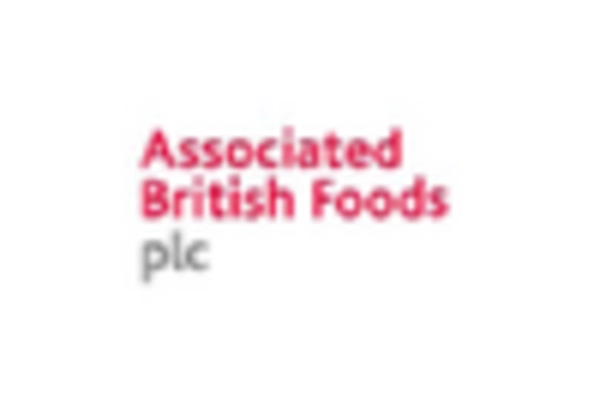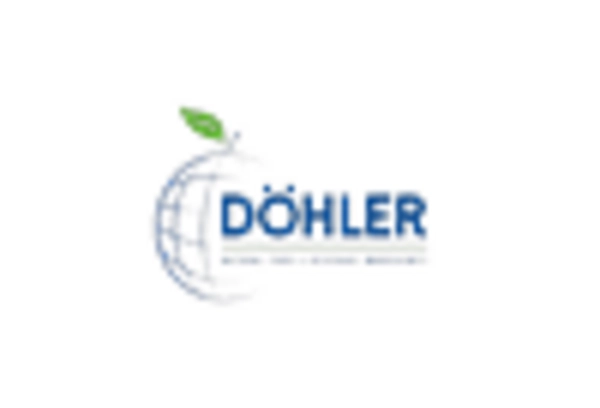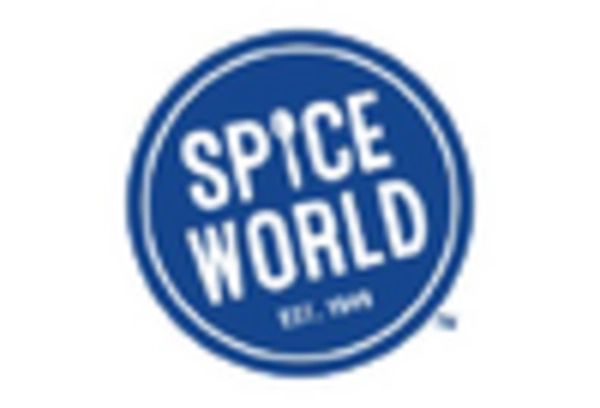Expansion of Retail Channels
The expansion of retail channels in Brazil is significantly impacting the spices market. With the rise of supermarkets, specialty stores, and online platforms, consumers have greater access to a variety of spices. This increased availability is likely to drive sales as consumers explore new products and brands. The growth of e-commerce, in particular, has transformed how spices are marketed and sold, allowing for a broader reach. Recent statistics show that online spice sales have grown by 25% in the past year, indicating a shift in consumer shopping habits. The spices market is thus adapting to these changes, ensuring that products are accessible to a wider audience.
Innovation in Spice Products
Innovation within the spices market is becoming increasingly evident as manufacturers introduce new products and blends to cater to evolving consumer preferences. The emergence of spice blends that combine various flavors is particularly noteworthy. For instance, the introduction of ready-to-use spice mixes has simplified cooking for many Brazilians, potentially increasing spice consumption. Market data suggests that the segment of blended spices has experienced a growth rate of 12% over the past year. This trend indicates that the spices market is adapting to consumer needs, fostering a dynamic environment where innovation plays a crucial role in driving sales.
Sustainability and Ethical Sourcing
Sustainability concerns are becoming more prominent among Brazilian consumers, influencing their purchasing decisions in the spices market. There is a growing preference for ethically sourced and environmentally friendly products. Consumers are increasingly inclined to support brands that prioritize sustainable practices, such as fair trade and organic certifications. This shift is likely to impact the market, as companies that align with these values may see enhanced brand loyalty and sales. Recent data indicates that the demand for sustainably sourced spices has increased by approximately 20% in the last year, highlighting the importance of sustainability in the spices market.
Cultural Heritage and Traditional Cuisine
Brazil's rich cultural heritage and diverse culinary traditions significantly influence the spices market. The integration of traditional spices into everyday cooking is a reflection of the country's identity. Spices like cumin, paprika, and coriander are staples in Brazilian households, often used in regional dishes. This cultural inclination towards traditional flavors suggests a stable demand for these spices. Market analysis indicates that the consumption of traditional spices has remained consistent, with a growth rate of around 10% annually. The spices market thrives on this cultural appreciation, ensuring that traditional flavors continue to be a vital part of Brazilian cuisine.
Health Consciousness and Natural Ingredients
The increasing awareness of health and wellness among Brazilian consumers appears to be a driving force in the spices market. As individuals seek to enhance their diets with natural ingredients, the demand for spices that offer health benefits is likely to rise. Spices such as turmeric and ginger, known for their anti-inflammatory properties, are gaining popularity. This trend is reflected in market data, indicating that the sales of health-oriented spices have surged by approximately 15% in the last year. The spices market is thus witnessing a shift towards products that not only add flavor but also contribute to overall well-being.

















Leave a Comment